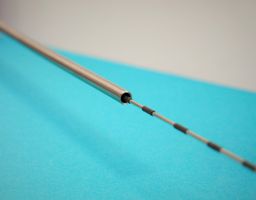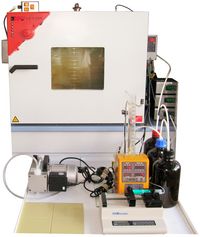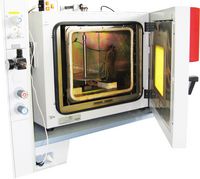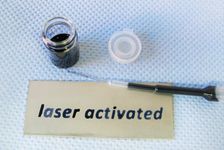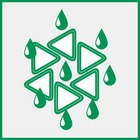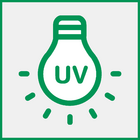Silicatization
Silicatization is the deposition of nanoscale silicate-like layers on surfaces. These usually hydrophilic and energy-rich silicate layers, on many materials form an excellent basis for building highly resilient composites. For example, stainless steels, titanium, dental alloys containing precious and non-precious metals, and many other materials can be adhesively bonded with high hydrolysis resistance and long-term stability using silicatization techniques.
In addition to the well-known techniques of silicatization by flame, plasma or blasting material, there are other variants which can be very advantageously exploited for certain applications due to their characteristics.
These modern silicatization processes include:
Electrochemical Silicatization
The silicatisation is carried out similar to an electroplating process with the use of electric current in an immersion bath or in a tampon electroplating arrangement, which also enables mobile use on already installed components.
In this process, the substrates are not subjected to temperature stress. Another major advantage of this technology is the possibility of silicatizing hard-to-reach areas of your component. Thus, effective silicate deposition can also be realized in deep through-holes or blind holes, which is hardly achievable with other methods.
This method of silicate deposition is especially suitable for stainless steel and titanium in order to achieve high adhesive strength for subsequent adhesive joints or laminations.
Gas Phase Silicatization
This coating method is a chemical, hydrolysis-based gas phase deposition, which is carried out under normal pressure. Functionalized silicate layers are applied by hydrolysis of gaseous silicon alkoxides.
This variant is excellently suited for the silicatization of larger quantities of small filigree parts. Extremely thin layers of a few nanometers are applied, whereby this process can be independently performed of the geometry of the parts to be coated. The temperature load of the substrates is about 200 °C.
This process represents a fast, safe and cost-effective way of layer functionalization by organofunctional groups and can be used to improve adhesion and for hydrophobic or oleophobic treatment.
Laser-based Silicatization
The silicatization by laser occurs in an immersion bath. The great advantage of this process technology is the very high degree of localized silicatization. Depending on the applied optics, the local resolution can be varied. Here, the diameter of the smallest possible laser spot is approximately 55 μm. This allows the activation of very small areas in differently complicated and complex structures.
The adjacent picture shows a stainless steel plate with the lettering "laser activated", which was generated by laser-based silicatization. The black test ink for indicating various surface properties such as surface tension is preferably collected in the hydrophilic silicated area of the lettering.
In this method, passive layers are removed in situ by the laser and replaced by the silicate layer. The treated substrates are not subjected to temperature stress. Therefore, this method is primarily suitable for the material-friendly and partial silicate coating of a variety of materials, especially for metals and ceramics.
This silicatization method represents a clean, versatile, cost and energy efficient technology for improving adhesion or for activating and functionalizing surfaces of your components.
We would be pleased to advise you on the use of silicatization techniques, process selection and development including parameter optimization. Furthermore, our range of services includes the selection and optimization of associated adhesive silane formulations, sampling and the performance of laboratory tests and feasibility studies.

Dr. Joerg Leuthaeusser
Head of Department
Primer and Chemical Surface Treatment
e-mail
Phone: +49 3641 2825 48




